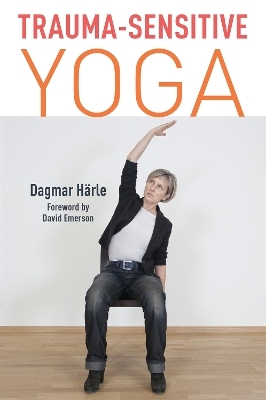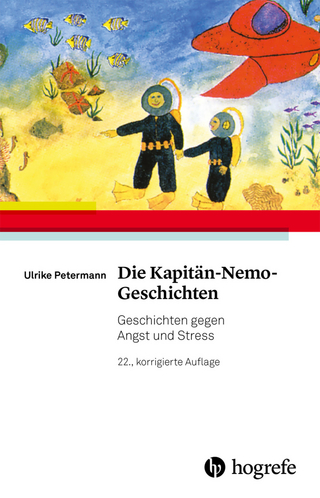
Trauma-Sensitive Yoga
Singing Dragon (Verlag)
978-1-84819-346-8 (ISBN)
Traumatic events are more than a narrative or singular event in a person's life; the body remembers traumatic events and can experience them over and over, even after many years have passed. This book shows how trauma-sensitive yoga can be used in individual therapy and in groups to overcome trauma, by calming the nervous system and helping people to come out of dissociative states. The book also shows teachers how to detect when certain postures trigger anxiety, and offers ways to support healing in general yoga classes.
Drawing on her experience as both trauma therapist and yoga teacher, the author focuses on the body-mind connection and presents asanas and breathing exercises that can help traumatised patients re-engage and take control of their bodies.
Dagmar Härle is a trauma therapist and yoga teacher based at the Institute for Body-oriented Trauma Therapy in Basel, Switzerland.
Acknowledgements. Foreword by David Emerson. Introduction. Part One. West - Psychotraumatology. 1. The Event. 2. The Impact. 2.1. Post-traumatic Stress Disorder (PTSD). 2.2. Complex Post-traumatic Stress Disorders, Attachment Trauma, and Developmental Trauma. 2.3. Dissociation. 3. Why Doesn't It Stop When It's Over? 3.1. The Hierarchy of Information Processing. 3.2. How Can Traumatic Experiences Be Integrated. 3.3. How Do We Reach the Subcortical Brain Structures? 3.4 Polyvagal Theory. 3.5. Top Down Versus Bottom Up. 3.6. The Inner World of the Body - The Sixth Sense. 4. What to Do? 4.1. Stabilization or Exposure Therapy? 4.2. First Develop a Good Relationship? 4.3. The Third Space. Part Two. East - Yoga: The Connection Between Body and Spirit. 5. Yoga is More than Asanas. 5.1. History and Principles. 5.2. The Paths to Liberation. 5.3. The Eightfold Path of Raja Yoga. 6. "Work In" - Hatha Yoga. 7. The Tools of a Yogi. 7.1. Asana. 7.2. Pranayama. 7.3. Mindfulness. Part Three. West Studies East: Research. 8. Yoga Helps! 8.1. Yoga Influences Neurotransmitters. 8.2. Does Yoga Help Trauma Clients? 8.3. Does Yoga Replace Trauma Therapy? 9. Which Components of Yoga are Effective? 9.1. The Rhythm Does It. 9.2. The Breath Does It. 9.3. Asanas or Pranayama? 9.4. Mindfulness as an Effect Factor. 9.5. Summary and Conclusions. Part Four. How Does Yoga Become Part Of Trauma Therapy? 10. The Method. 10.1. Basic Preconditions for Trauma Therapy. 10.2. Principles for a Body-Oriented Approach. 11. Possible Practice Settings. 11.1. Trauma-Sensitive Yoga in the Group. 11.2. TSY at the Beginning and/or End of a Therapy Session. 11.3. Planning and Developing a Yoga Program. 11.4. Incorporating TSY into the Trauma Therapy. 11.5. Planning the Therapy. 12. Guidance for Instructors. 12.1. Tone of Voice. 12.2. Pace and Timing of Speech. 12.3. Processing of Instructions. 12.4. Staying in Contact. 12.5. Keeping the Focus on the Body. 12.6. Emphasis on Choices and Freedom in Decision-making. 12.7. Corrections. 12.8. The Language of Empowerment. 12.9. Wavelike Instruction and Breaks. 12.10. Relationshop and Mirroring. 12.11. Interoceptive Language. Part Five. Practice. 13. Asanas. 13.1. Seated Poses. 13.2. Standing Poses. 14. Breathing. 14.1. Breating in Anatomical Terms. 14.2. Breathing in Practical Terms. 14.3. Goals of Breath Control. 14.4. Pranayama Practice. 14.5. How Do I Introduce Working with the Breath? 14.6. Pranayama Exercices. 15. Mindfulness. 15.1. Effective Factors. 15.2. Goals of Mindfulness Practice. 15.3. Being Non-Judgemental. 15.4. What Does Non-Mindfulness Actually Look Like? Part Six. Achieving Therapeutic Goals with Trauma Sensitive Yoga. 16. Overview of Therapy Goals and Trauma-Sensitive Yoga. 17. Psychoeducation. 18. Practice and Case Examples. 18.1. Building Resources. 18.2. Affect Regulation and Control. 18.3. Learning Differentiation. 18.4. Flexibility in Posture and Movement. 18.5. Impulses and Interrupted Defensive Movement. 18.6. Relaxation. 18.7. Exposure and Habituation in Body-oriented Therapy. 18.8. Relationship on an Equal Basis. 18.9. Dissociation and Flashback: Here-and-Now Experiences. 18.10. Changing Concepts of the Self: Empowerment and Self-Esteem. 18.11. Reducing States of Tension in the Body. Concluding Thoughts. Appendices. Bibliography. Index.
| Erscheinungsdatum | 04.07.2017 |
|---|---|
| Übersetzer | Christine M. Grimm |
| Vorwort | David Emerson |
| Zusatzinfo | Black and white photographs |
| Verlagsort | London |
| Sprache | englisch |
| Maße | 152 x 226 mm |
| Gewicht | 457 g |
| Themenwelt | Sachbuch/Ratgeber ► Gesundheit / Leben / Psychologie ► Krankheiten / Heilverfahren |
| Geisteswissenschaften ► Psychologie ► Angst / Depression / Zwang | |
| Geisteswissenschaften ► Psychologie ► Klinische Psychologie | |
| Medizin / Pharmazie ► Medizinische Fachgebiete ► Notfallmedizin | |
| Medizin / Pharmazie ► Physiotherapie / Ergotherapie ► Ergotherapie | |
| ISBN-10 | 1-84819-346-7 / 1848193467 |
| ISBN-13 | 978-1-84819-346-8 / 9781848193468 |
| Zustand | Neuware |
| Haben Sie eine Frage zum Produkt? |
aus dem Bereich


